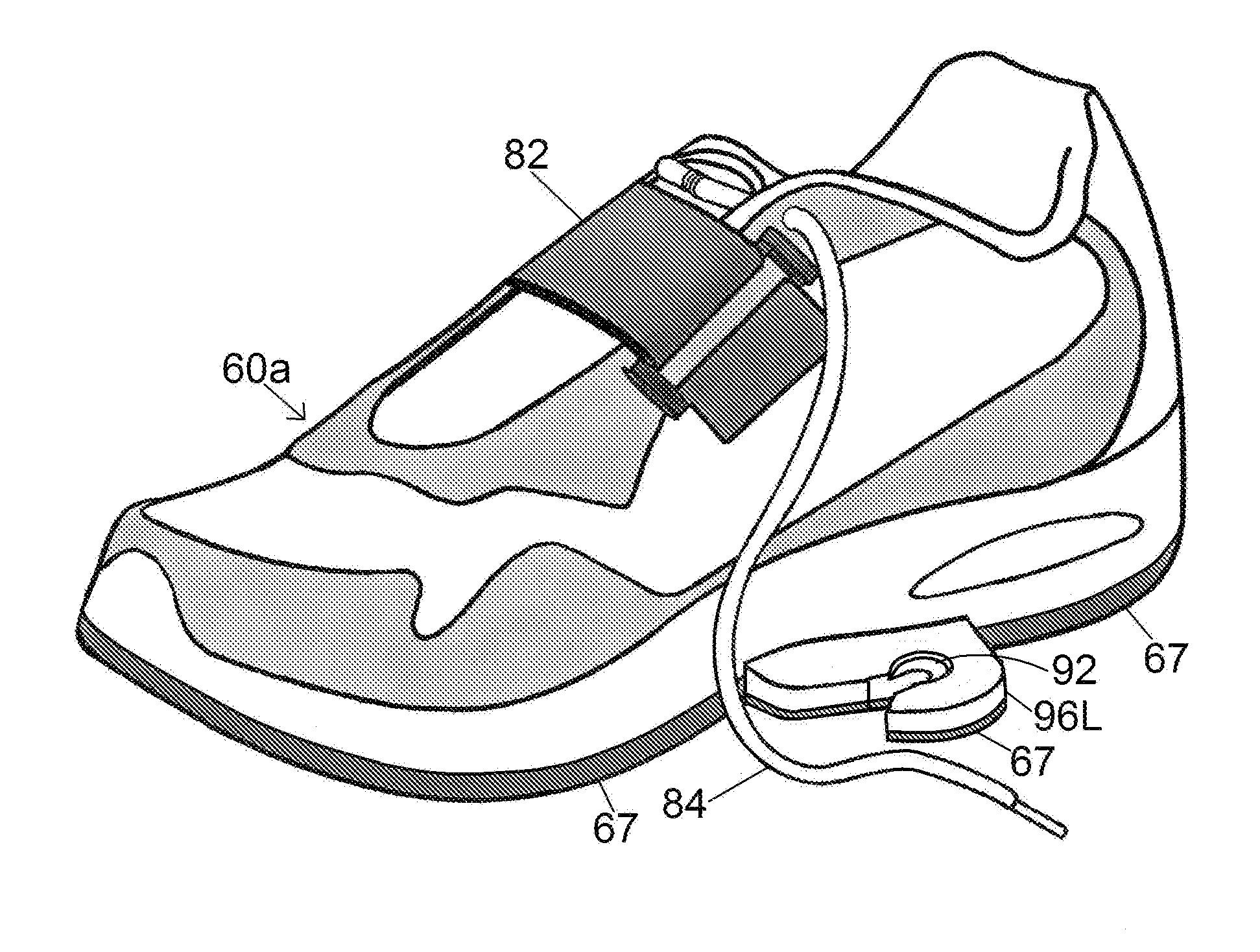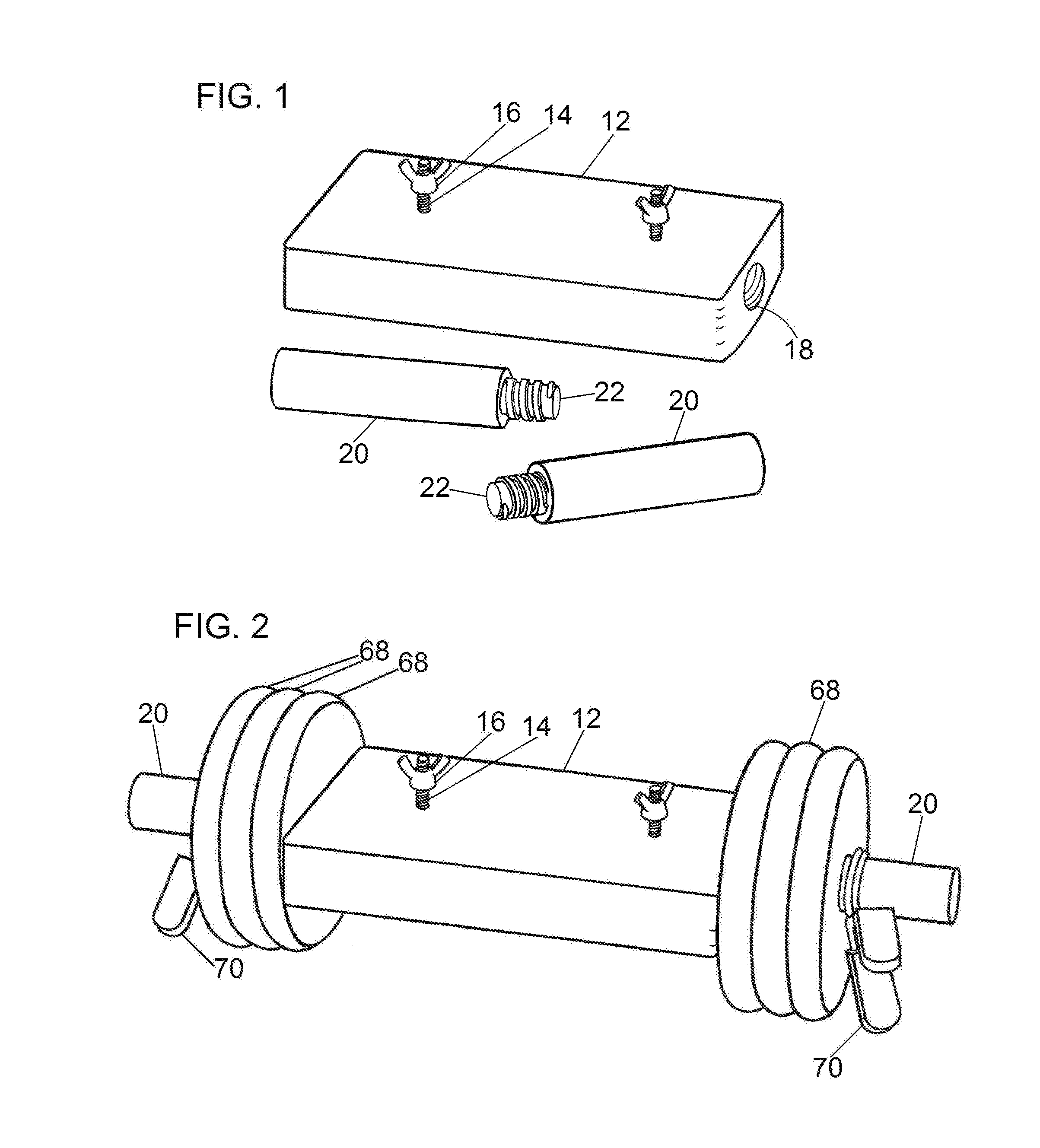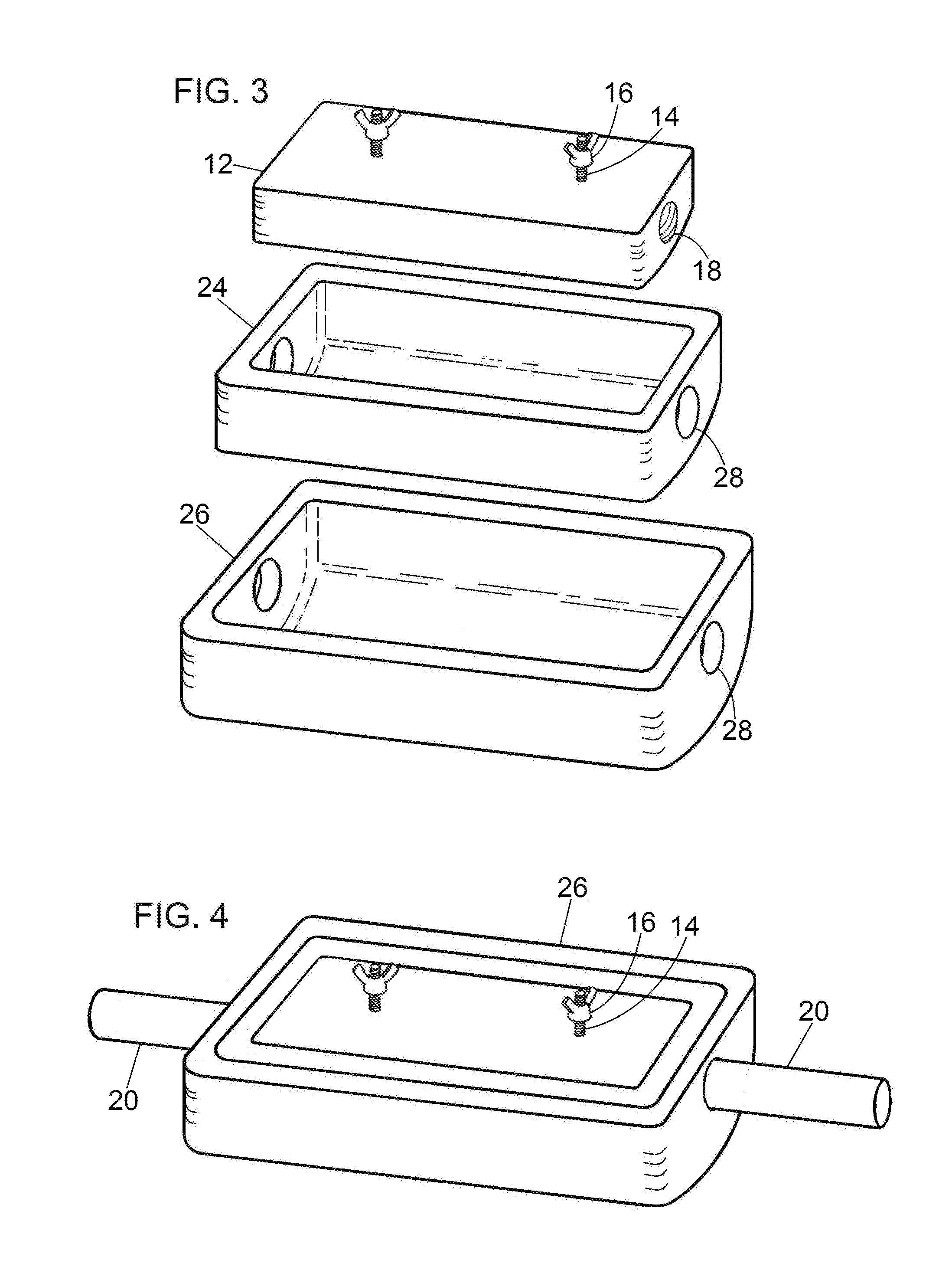Weights for Weight Lifting Shoes and Sandals
a technology for shoes and sandals, which is applied in the field of weights and weight holding devices, can solve the problems of fewer and much more difficult coordination of legs exercise, affecting the efficiency of users,
- Summary
- Abstract
- Description
- Claims
- Application Information
AI Technical Summary
Benefits of technology
Problems solved by technology
Method used
Image
Examples
Embodiment Construction
[0037]A preferred embodiment of this invention is shown in FIGS. 1-4.
[0038]The weight 12 is a 101b. piece of cast iron and it has threaded posts 14 with wing nuts 16 to attach it to corresponding hardware on a shoe or sandal, and it has a flat upper surface for accepting the bottom of the shoe or sandal. It can also be made of plastic filled with concrete or any other suitable material. Weights of this kind can be anywhere from 2 to 100 lbs or more.
[0039]The threaded posts 14 are designed to be accepted by slots 94 in tabs 96R &96L that protrude from the sides of weight lifting shoes or weight lifting sandals such as those shown in FIGS. 14 and 15A-B. The wing nuts 16 should then be twisted down into concavities 92 in those tabs so that the shoe or sandal and hence the user's foot will be secured to the weight. FIGS. 16A-B, FIG. 17, and FIGS. 18A-C show weight lifting sandals and shoes correctly attached to a weight holding device 34a that uses the same threaded posts 14 and wing nu...
PUM
 Login to View More
Login to View More Abstract
Description
Claims
Application Information
 Login to View More
Login to View More - R&D
- Intellectual Property
- Life Sciences
- Materials
- Tech Scout
- Unparalleled Data Quality
- Higher Quality Content
- 60% Fewer Hallucinations
Browse by: Latest US Patents, China's latest patents, Technical Efficacy Thesaurus, Application Domain, Technology Topic, Popular Technical Reports.
© 2025 PatSnap. All rights reserved.Legal|Privacy policy|Modern Slavery Act Transparency Statement|Sitemap|About US| Contact US: help@patsnap.com



